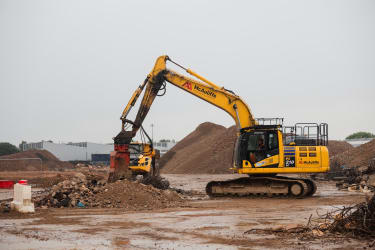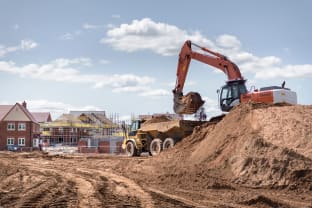
We spoke with Karen Thornton, NHBC’s Land Quality Service Manager about the rise in landfill tax and the Treasury's recent consultation on further reforms in England and Northern Ireland.
According to The UK Construction Industry Annual Waste Report 2023 13% of construction materials were still sent to landfill, despite the introduction of the landfill tax in October 1996. These changes emphasise governments' increased commitment to divert as much waste as possible from landfill and have interesting implications for those involved in Land Regeneration schemes.
What is landfill tax?
The landfill tax is charged by weight and applies to all waste disposed of at a licensed landfill site, unless the waste is specifically exempt.
There are currently two rates for the landfill tax:
- a lower rate for inactive waste, such as soil and rocks (materials with minimal decomposition)
- and a standard rate for all other waste.
The landfill tax encourages businesses to explore alternative waste management methods such as recycling and reuse. The lower rate for inert waste reflects its reduced environmental impact compared to other types of waste.
Karen Thornton, NHBC’s Land Quality Service Manager explained “Using soils and materials on a site for land remediation benefits businesses and promotes environmental sustainability. However, it is vital to ensure that reused materials are suitable for their intended purpose to uphold development standards and site safety.”
How has the landfill tax changed and what further reforms are proposed?
On 1 April 2025 landfill tax rates in England and Northern Ireland increased by nearly 23% to £4.05 per tonne for inert waste and to £126.15 for the standard rate, which covers hazardous waste.
A HM Treasury consultation proposes replacing the current material-based tax with a single higher rate. Although devolved in Scotland (2015) and Wales (2018) both are also reviewing the effectiveness of the lower rate.
Karen Thornton added “Government aims to eliminate all but hazardous construction waste from landfill, cut soil waste by 75% and reach zero avoidable waste by 2050. While some materials, such as rocks and soil, can be recycled there needs to be a greater incentive to do so.”
Reducing costs
Soil, rocks, and construction materials may be reused with proper planning, classification and site controls reducing unnecessary landfill use. This benefits the environment and cuts costs without sacrificing quality. For earthworks such as flood prevention, upfilling, ground improvement or regrading NHBC Chapter 4.6 on Engineered Fill provides guidance on compliance for residential projects.
The NHBC Land Quality team is here to help you ensure practical solutions for potential on-site material re-use. By engaging with the team early in the construction process, proposals can be reviewed and feedback provided on whether NHBC Land Quality requirements are met.
Karen Thornton said “The LQS team supports developments by following NHBC Chapter 4.6. Instead of off-site disposal more sustainable options can be considered to reduce disposal costs as well as lower the carbon footprint.”
NHBC’s role in de-risking sites
NHBC is the leading warranty and insurance provider for new homes in the UK, working with a range of builders and developers to help them get it right from the start of each project.
As part of an ongoing commitment to build quality, NHBC can de-risk land for house builders, strategic land developers and others involved in bringing forward land for residential markets through its Land Quality Service.
How does Land Quality Service support warranties?
The LQS team provide specialist opinion on land suitability and remediation, ensuring confidence in sites before registration for warranty and supporting compliance with planning conditions.
Latest articles

Brownfield vs greenfield vs grey belt: how development risks differ

NHBC and ARL collaborate to deliver successful brownfield webinar examining challenging sites

Why land quality matters in residential development
